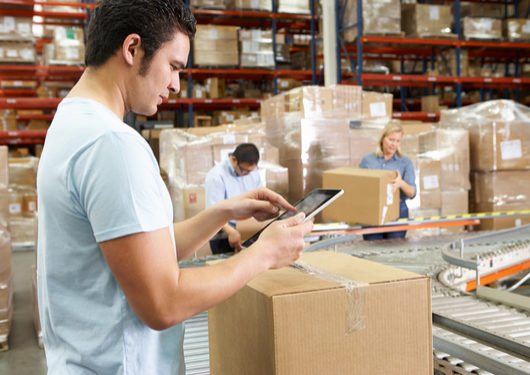
Visit Our Sponsors |
|
|
|
|
|
|
|
|
|
|
|
|
|
|
|
|
|
|
|
|
|
|
|
|
|
|
|
|
|
|
|
|
|
|
|
|
|
|
|
|
|
|
|
|
|
|
|
|
|
|
|
|
|
|
|
|
|
|
|

Technologies that were previously considered futuristic, overly complex, and unable to be financially justified are becoming mainstream. This is no longer "emerging technology" -- it is here, it works, and it is now being implemented, changing the supply chain. Warehouses, distribution centers and fulfillment centers are accelerating their adoption of newer technology solutions. It is time for executives to reevaluate their initial assumptions across material handling and technology solutions. -David Meyers, Principal, Tompkins International
The pace of digital disruption continues to accelerate in warehouses, distribution centers and fulfillment centers (DC/FC), and the magnitude of the disruptions is keeping pace. Implementing digital business strategies can provide significant improvements in process simplification, operational agility and flexibility, increasing productivity, and meeting rising customer expectations. The commoditization of what used to be viewed as emerging technologies means that they are now being implemented by many businesses and provides evidence of their increasing value.
Leaders of business operations that include at least one DC/FC and/or warehouse should involve their technical counterparts and focus in the areas that provide the best prospects for more effective management of their facilities and, ultimately, their supply chain and customers. Adoption of the “top-trending” technologies may fit your business strategy, but you must base your decision to adopt through due diligence, to ensure that the structure follows the strategy.
Robotics
Reducing travel time and walking distance is still the primary driver for justifying this type of automation, but having a flexible and scalable operation with less dependence and risk related to labor availability is becoming more highly weighted in material handling evaluations.
Most commonly deployed for picking and goods-to-man materials movement, newer robotics vendor offerings now provide for unit sortation of batch picks to packing stations (or directly into shipping cartons). Imagine a tilt-tray sorter where the individual trays are not connected to a single, fixed path, but can be dynamically directed to go anywhere they are needed.
Robotics solutions can also now be used for carton or parcel sortation to outbound shipping lanes or pallet containers.
Internet of Things (IoT) Platforms
The commoditization of sensor technology, that can be attached to nearly every electrical and mechanical device in your DC or FC, either in a fixed position or in motion, provides a tremendous opportunity to gain knowledge and insight to improve your operations.
By leveraging an IoT platform to connect these sensors across your network, and using supply chain specific analytics tools that can take advantage of this data, you are able to move from historical reporting, past real-time information, and into the realm of predictive and prescriptive analytics.
Typical applications can include monitoring motors for heat and load to predict faults and failures, prescribing the right light and temperature levels that could result in greater employee productivity at different times of the day, and managing work and material flow while providing alert notifications to proactively reroute the workflow before bottlenecks occur. These are only a few examples, but the potential is tremendous when you consider the vast array of sensors deployed in a typical DC/FC.
The Outlook
In 2018, warehouses and DC/FC need to provide for even more flexibility and scalability at a lower cost than facilities with traditional designs and less than optimal business processes. The benefits of deploying robotic solutions over an extended IoT platform are real. Executives who “wait and see” may be weighting the risk of implementation too heavily versus the risk of not implementing. The real business risk is in delaying the adoption of these technologies.
RELATED CONTENT
RELATED VIDEOS
Timely, incisive articles delivered directly to your inbox.


